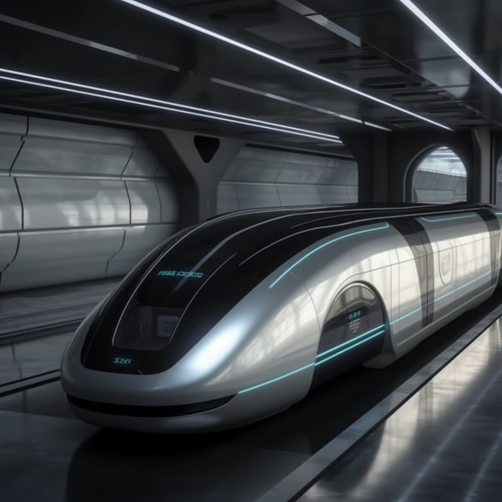Introduction: As we enter a new era of rapid and efficient transportation, Japan is setting the stage for the future with its groundbreaking Hyperloop technology. This revolutionary mode of transportation promises to revolutionize the way we travel and connect with one another, with the potential to redefine the very concept of distance. In this article, we will delve into the intricacies of Japan’s new Hyperloop technology, its upcoming maiden voyage in 2023, and the exciting possibilities it holds for the world.
Section 1: A Glimpse into the Hyperloop Technology
Imagine a near-frictionless capsule, levitating inside a vacuum-sealed tube, propelled at speeds that could rival commercial airplanes – this is the essence of the Hyperloop. Originally conceived by Elon Musk in 2012, the idea has since been adopted and improved upon by various companies and governments worldwide. Japan, known for its technological prowess and affinity for innovation, has taken up the challenge to develop its own unique Hyperloop system.
Section 2: How Japan’s Hyperloop Stands Out
Japan’s Hyperloop technology features several advancements that set it apart from its global counterparts. One key difference lies in the levitation system. Instead of relying on air bearings or magnetic levitation (maglev), Japan has developed an electrodynamic suspension system that promises increased stability and efficiency. Furthermore, the country’s expertise in earthquake-resistant engineering is expected to make the infrastructure more resilient to natural disasters, a critical advantage in a seismically active region like Japan.
Section 3: The Maiden Voyage and Beyond
The Japanese Hyperloop’s first test run is scheduled for early 2023, and anticipation is building both within the country and around the world. This monumental event will serve as a major milestone in transportation history, as Japan’s Hyperloop sets out to prove its viability, efficiency, and safety.
The initial test will cover a distance of 50 kilometers, with the ultimate goal of connecting Tokyo and Osaka in just 30 minutes – a journey that currently takes around 2.5 hours by Shinkansen bullet train. The success of this endeavor could pave the way for a national and, eventually, a global Hyperloop network that would dramatically reduce travel times and carbon emissions.
Section 4: The Impact on Society, Economy, and Environment
The introduction of the Hyperloop in Japan could have profound implications for society, the economy, and the environment. By making long-distance travel faster and more accessible, the Hyperloop could foster increased collaboration, innovation, and cultural exchange between cities and regions. In addition, it could help alleviate traffic congestion and reduce the demand for short-haul flights, leading to a decrease in greenhouse gas emissions and pollution.
From an economic standpoint, the Hyperloop has the potential to spur growth in various sectors, including construction, manufacturing, and tourism. As the technology continues to evolve and expand, new job opportunities are likely to emerge, benefiting the local and global workforce.
Conclusion:
Japan’s new Hyperloop technology represents a bold leap into the future of transportation. As the world watches in anticipation, the success of the 2023 maiden voyage could signal a new chapter in human mobility, bringing us closer together in ways we never thought possible. The Hyperloop holds the promise of a more connected, sustainable, and prosperous future – and with Japan at the helm, the sky is truly the limit.

コメントを残す